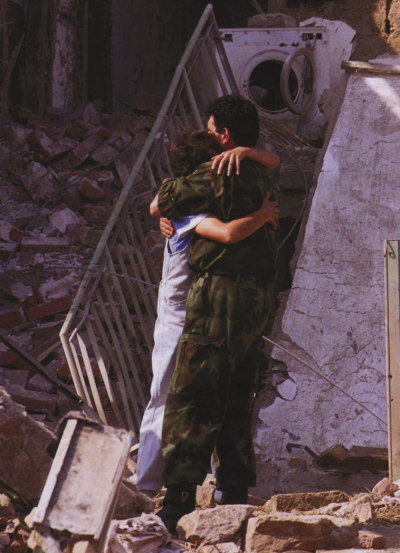The ISIS Massacre in Sweida: A Story of Torment and Resilience for an Uninterested World
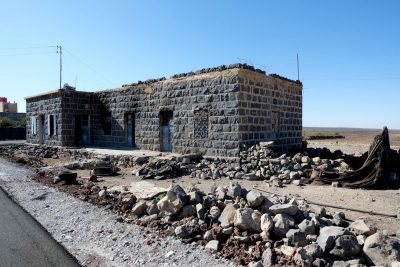
“Imagine that this were your village, or your neighborhood! Imagine that one of those were your house! Imagine that the same thing happened to you! Imagine that you lost a family member, or maybe two, or maybe more! Imagine that your mother, sister, daughter or son is still kidnapped and now in the hands of … ISIS!” — Syrian Wissam Sliman
***
On July 25, 2018, ISIS terrorists attacked Sweida City and villages in the surrounding countryside. The ensuing massacre, one of the bloodiest of the eight-year Syrian conflict, went virtually unreported in the West. The U.S. coalition, illegally occupying Syrian territory, turned a blind eye as the ISIS terrorists that they claim to be waging war on entered the seven villages to the east of Sweida City that were targeted for wanton bloodshed.
At 4 a.m. the terrorist group approached under cover of darkness. They encircled each village, posting snipers around the villages and along the straight road that connects them all, to prevent civilians from leaving or coming to the aid of others. ISIS fighters entered homes and murdered civilians — even children as they slept, unaware of the horror that was approaching. In Shbeki a disabled child was beheaded as he slept. In Shrehi “the roads ran with blood,” according to resident of the village, H. Saab (his full name is not given for security reasons), who lost 35 members of his extended family in the attack.
In September 2018, I visited three of the seven villages that had endured the July attack. Sweida is a province around 110 km to the south of Damascus. It is the home of the Syrian Druze community that has remained steadfastly loyal to the Syrian state and Syrian Arab Army throughout the regime-change war waged against Syria by the U.S. coalition, Turkey, the Gulf States and Israel for eight long years. Until this massacre, the Druze had rarely been catastrophically affected by the conflict. The SAA had successfully kept a check on ISIS advances into the heartland of this fiercely resilient province.
The attack was given cursory coverage by most in the media; it was certainly not marked as one of the most heinous crimes committed by a terrorist group that was effectively enabled and protected by the U.S. coalition embedded in Al-Tanf, 330 km to the northeast of Sweida City and the targeted villages. ISIS fighters moved in from the direction of Tilal Al-Safa, a volcanic desert region situated around 100 km from Sweida City, again to the northeast. At no point did the Al-Tanf military base, bristling with surveillance equipment, detect or react against the ISIS operation. At the time, acclaimed Middle East journalist Elijah Magnier pointed out: “ISIS knew it was possible for its convoy to drive under the eyes of a superpower state [the U.S.] without being disturbed.”
As always, the true victims of this eight-year war will be brushed under the carpet while the focus remains upon the whitewashing of the perpetrators of the crimes against the Syrian people – the “rebel”-washing of the terrorist gangs who have been enabled to roam freely across Syria by the U.S. coalition and its Gulf State financiers of the sectarian ideologues described by the colonial media as “moderates.”
During our drive down to Sweida, I asked our guide, H. Saab, what he believed to be the motive behind these brutal attacks; he responded:
I believe it was to force the SAA to reduce pressure on the ISIS terrorists holding out in Yarmouk Basin close to the border with the illegally Israel-annexed Golan territories. ISIS are given protection in the 55 km buffer zone surrounding the camp and the Syrian Arab Army is not allowed to enter this zone, despite it being Syrian territory. Perhaps it was to allow ISIS an escape route to the U.S. base at Al-Tanf and the buffer zone area where they would receive equipment and protection from the U.S Coalition”
H. Saab also suggested that ISIS may well have wanted to actually take control of the villages, as they would have provided a stronghold that was easy to defend, offering high-ground and networks of ancient caves and underground passageways that could be converted into bunkers and shelter from bombing and artillery fire.
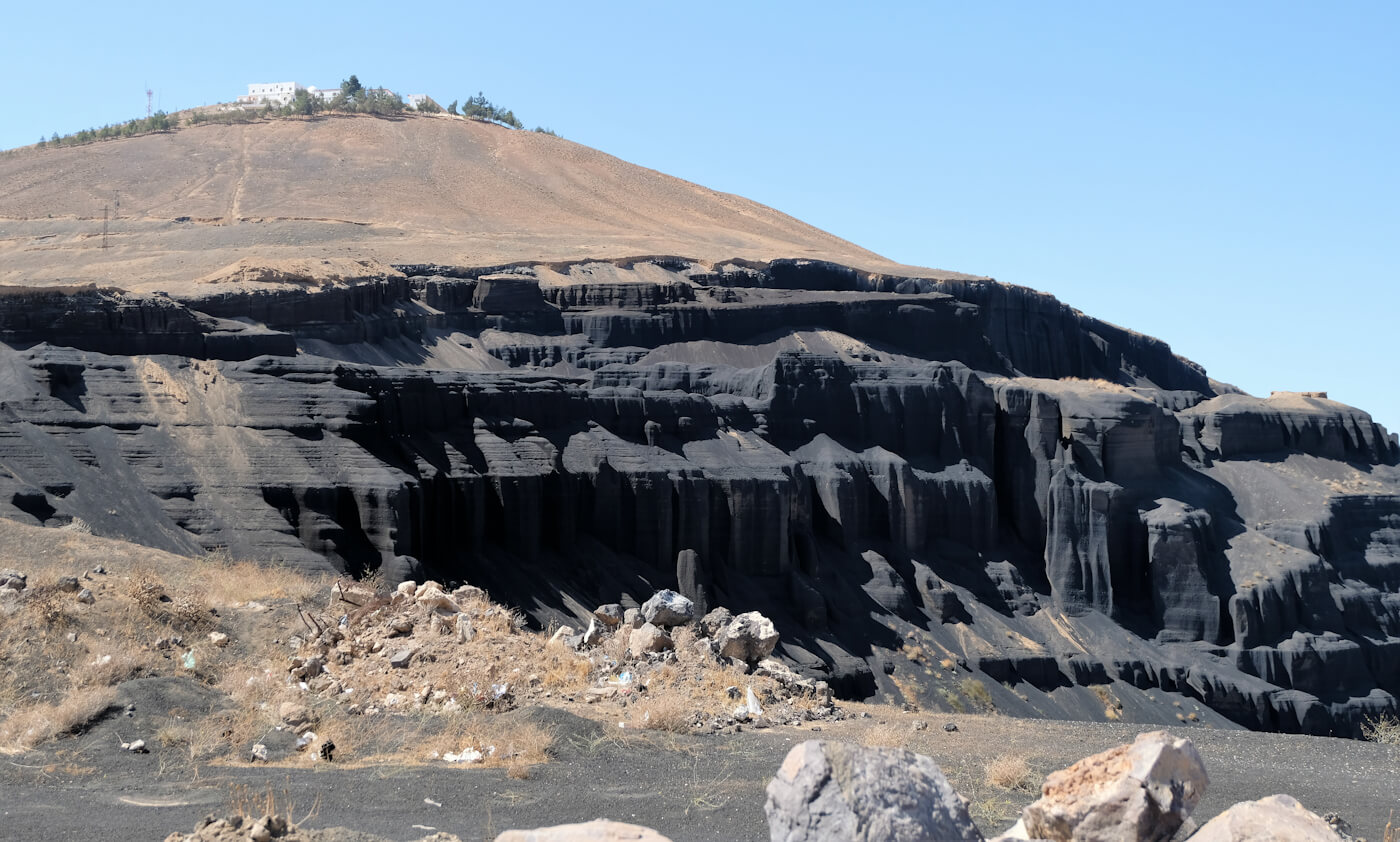
The basalt mountain on the road to Sweida. Photo | Vanessa Beeley
Sweida does have an other-worldly aspect to it: the vast stretches of desert, the hillsides dotted with fruit trees and the beautiful basalt mountain that rises out of the ground like a massive, glittering obelisk by the side of the road taking you towards this historically rich Byzantine region. Towns and cities date back to the first century B.C., during which time many were famous for the quality of their wines: Sweida was called Dionysias during Hellenistic and Roman times; Dionysus is the god of wine and the excellent reputation of this ancient wine-producing region persists today.
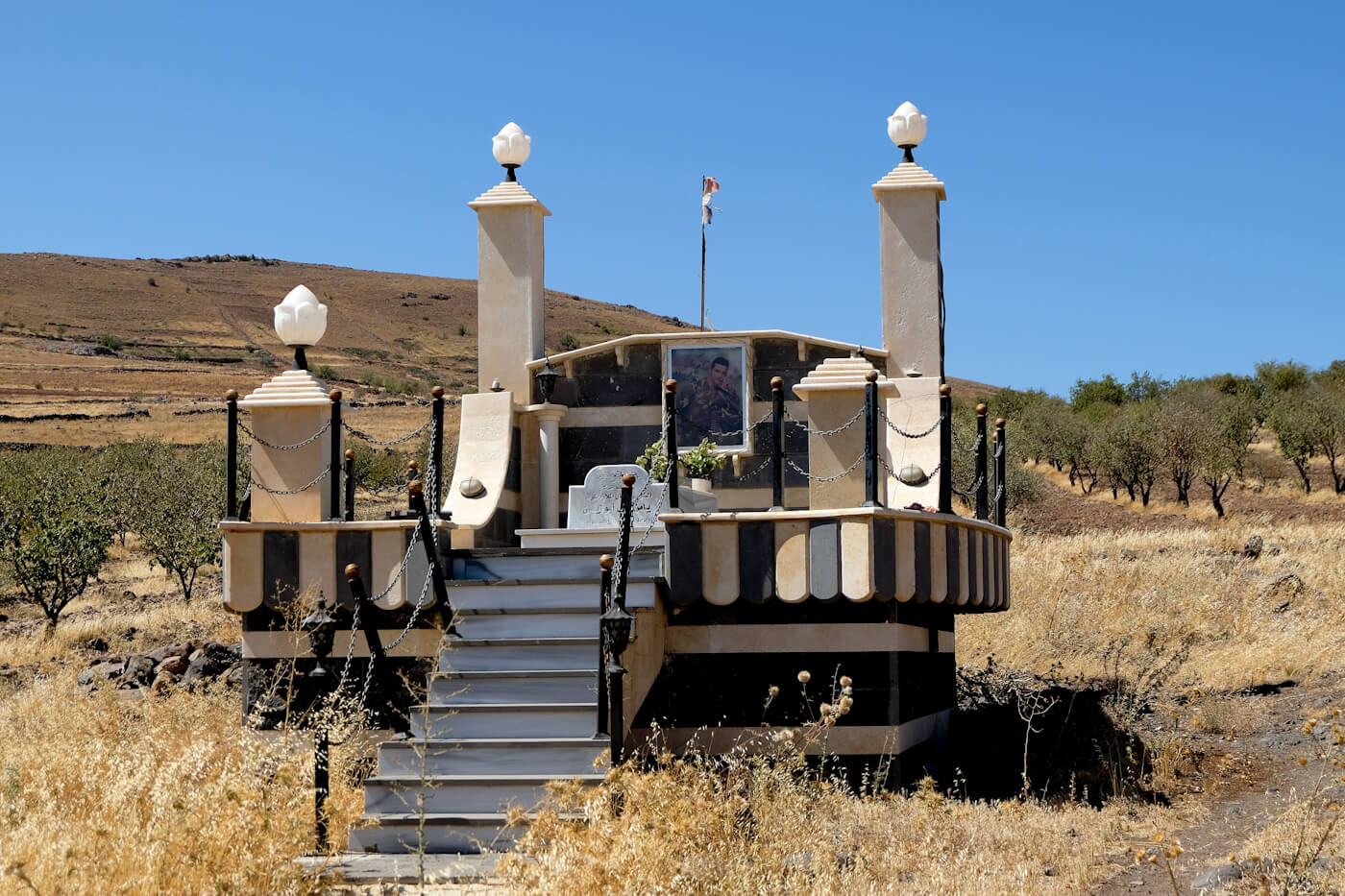
One of the many memorials to martyred soldiers in Sweida. Photo | Vanessa Beeley
I described these surroundings in a piece I wrote in October, “Sweida: A Bloody Massacre Barely Registered by Western Media as ISIS Slaughter Innocent Civilians in their Sleep:”
As we entered the province of Sweida, we began to see the elaborate memorials to martyrs killed in Syria’s war against Western-sponsored terrorism. Our guide told us that these beautiful monuments are in honour of the soldiers who have given their lives in defence of their homeland. Many of these impressive structures are placed at the entrance to villages ‘so their names are remembered for eternity by all those who live because they died.’
We were told that some of these graves also date back to the 1925 ‘Great Syrian Revolt or ‘Great Druze Revolt’ against France. They are wonderful to behold, rising out of the dry desert plains, backdropped by the hills and trees that pepper the landscape stretching out in front of us.”
In September, a pall of grief still hung over the villages, and an understandable anger at the bloodbath they had endured. The anger was largely directed at the U.S. and its allies, particularly Britain. The overriding sense was one of a massacre that could have happened only with the U.S. collusion and collaboration with the ISIS terrorist entity Washington claims to be combatting. The implications of this belief are huge — the raison d’etre of the U.S. coalition in Syria is the “elimination” of ISIS, yet here we have civilians telling us that, in their informed view, ISIS has been protected and its power multiplied by the U.S. in Al-Tanf.
Two-hundred-and-seventy civilians were massacred during the few hours that battles raged between ISIS and civilians, many of whom were armed with nothing more than hunting rifles. Three hundred more men, women and children were injured. Homes were entered by ISIS from 4 a.m. onwards, their inhabitants brutally murdered. The same homes were taken over as sniping nests by the terrorists, and from these vantage points ISIS picked off the dozens of young men who flocked to defend their towns once the initial shock of the attack had dissipated:
Many of our young men, women and children bled to death in the street. Nobody was able to get to them or to transport them to hospital. If they tried, they would be sniped.” – Khaled Saab
Khaled Saab’s mother, father, brother and cousin were martyred in the attack on the village of Shrehi, where 37 civilians were massacred. Khaled told me that he believed the ISIS fighters were high on drugs, very possibly Captagon. “We fired many bullets into them, but they kept fighting” he said.
In January 2017 “at least 137 kg of Captagon — dubbed a ‘jihadist drug’ and ‘the drug of the Syrian conflict’” — was seized at Paris Charles de Gaulle Airport in a first for France, customs officials said, adding that “half of the illicit cargo was destined for Saudi Arabia.” Captagon is a psychostimulantthat is used as a performance enhancer by the extremist gangs that have invaded Syria since 2011.
According to Khaled, the ISIS fighters were well equipped with modern and expensive weaponry and vehicles, which he believed to be supplied by the U.S. alliance:
These groups, all of them, are supported by the U.K., U.S. and Gulf States to target and destroy our peaceful towns. Throughout history Syria has sacrificed martyrs and we are ready to sacrifice our souls for our land, despite more than 120 countries attacking us with the terrorist groups as their instrument. They should know we will stand and fight to defend our land and our people.”
Fifty-three ISIS fighters were killed by the villagers defending their families and homes. Khaled informed us that the majority were foreign mercenaries:
After we killed the ISIS terrorists, we checked their IDs. They were Chechen, Saudi, Iraqi, Palestinian, Egyptian, Somali. One was wearing a suicide belt, nothing remained of him after he had detonated it.”
Accounts of horror and bloodshed from civilians
During my time in the villages, horrific stories overflowed from every individual I encountered. It was hard to comprehend the scale of the bloodshed that had occurred in a relatively short time between 4 a.m. and the early afternoon, when ISIS terrorists were finally driven back before escaping towards Tilal Al-Safa. Another resident, Ziad Saab, whose brother-in-law had been executed in one of the first houses at the entrance to Shrehi, told me:
We have been affected by terrorism in this area and across Syria, organized by powerful countries — the U.S. and the U.K. and, unfortunately, several Arab countries. The main point I would like to make: all the seven villages attacked by ISIS are “safe;” there is no army presence, no checkpoints, no military zones. ISIS attacked innocent civilian people. The proof is that all the martyrs were civilians.”
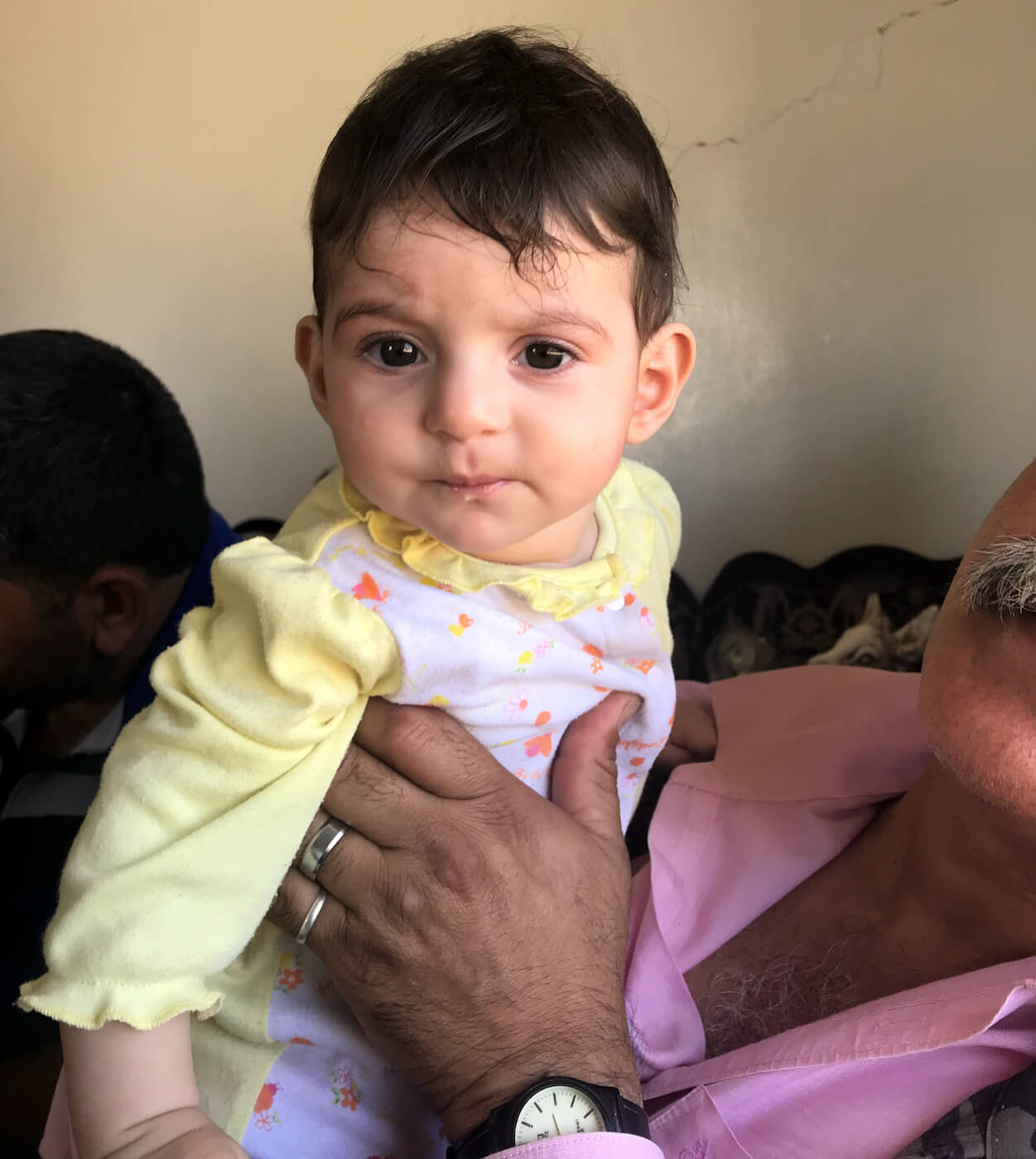
Six-month-old baby Ghala whose father was gunned down by ISIS terrorists 100 yards from Ziad Saab’s home. Photo | Vanessa Beeley
As we were eating breakfast with Ziad and his family, baby Ghala was brought into the room. Ghala is six months old; her father was gunned down by the ISIS fighters just a hundred yards from Ziad’s bullet-strafed home on July 25. Watching Ghala being held aloft by H. Saab, her gorgeous little face breaking into smiles, it was heartbreaking to comprehend the suffering and loss that so many children in Sweida and across Syria will have to grow up with as a result of this senseless violence.
Wissam Sliman, a Syrian who followed events in Sweida closely, described on Facebook the trauma of the ISIS attacks in the Sweida countryside:
Imagine that this were your village, or your neighborhood! Imagine that one of those were your house! Imagine that the same thing happened to you! Imagine that you lost a family member, or maybe two, or maybe more! Imagine that your mother, sister, daughter or son is still kidnapped and now in the hands of the worst terrorist group ever, which is ISIS!
And above all imagine that it didn’t mean anything to half of your brothers and sisters in humanity in this world, just because they are still sleeping, daydreaming and refusing to wake up! What hurts you is that if they did wake up seven years ago, you would have had many of your beloved ones around you now, but they didn’t, because they are still refusing to wake up!”
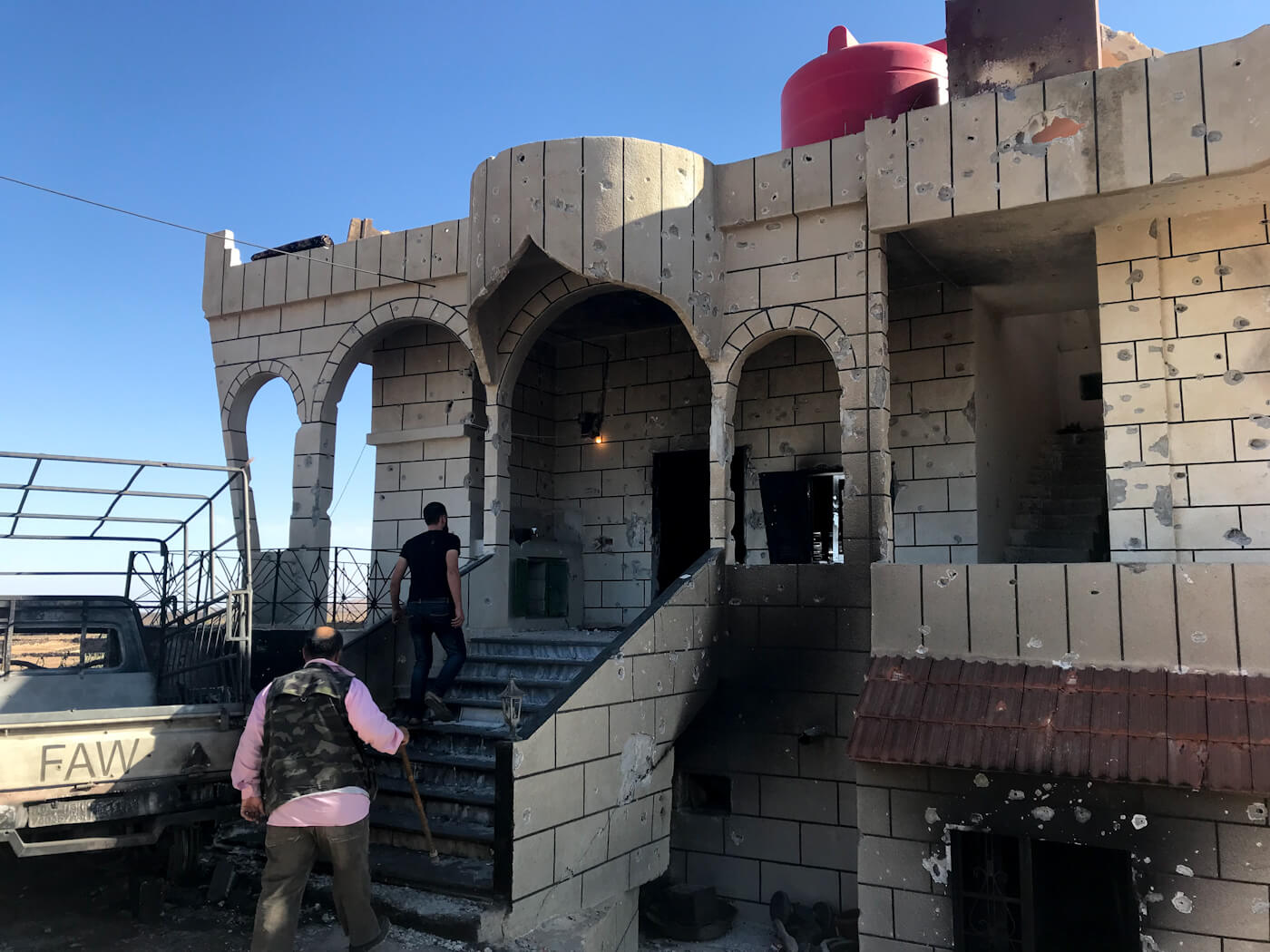
Shbeki: outside of a home taken over by ISIS for use as a sniper nest. Photo | Vanessa Beeley
In Shbeki, the next village I visited, the violence and bloodshed had intensified. Here, 60 civilians were massacred and 29, mostly women and children, were taken hostage by the fleeing ISIS gangs. I was told, during a visit to Shbeki in November, that only 12 men were available to defend the village early on in the ISIS attack but they managed to hold ISIS at bay until reinforcements arrived shortly after. At the entrance to the village was a burned out car embedded in the rock-strewn earth.
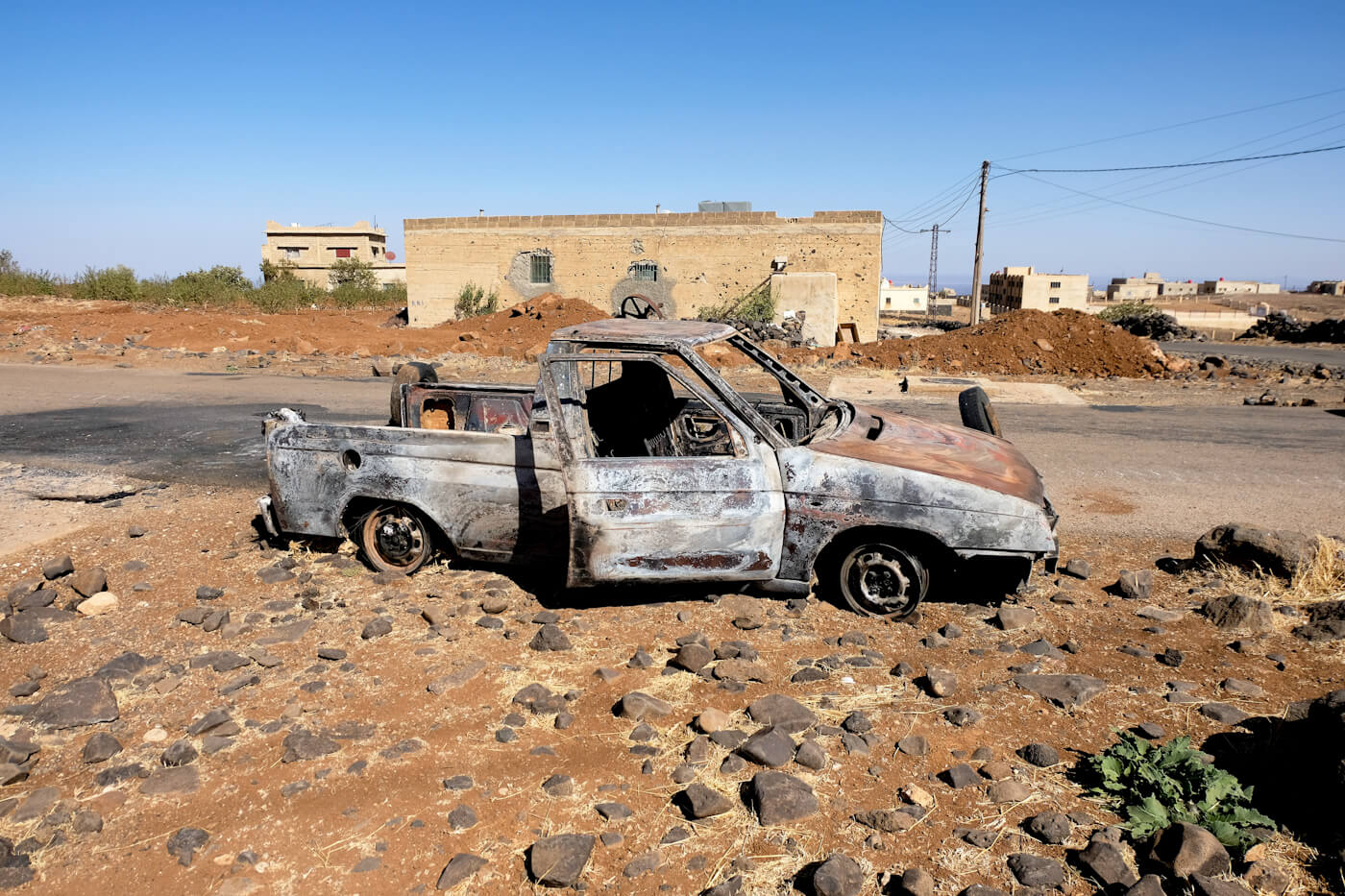
A burned out car at the entrance to Shbeki. Photo: | Vanessa Beeley
The car, a Skoda, had once belonged to Bahjat Atallah Saab who tried to rescue Zahi Jadallah Saab and his wife and son, Assem Zahi Saab, a law student. The entire car was targeted when they tried to flee the ISIS attack on Shbeki that began at 4 a.m. on 25th July 2018. The car came under attack by the ISIS snipers before being targeted by an RPG which turned the car into a furnace from which the occupants did not escape. Martyr Bahjat Saab was working as an Arabic language teacher.” ~ Vanessa Beeley, Sweida: A Bloody Massacre Barely Registered by Western Media as ISIS Slaughter Innocent Civilians in their Sleep.”
In Shbeki we spoke to Hazem, a third-year science research student at Damascus University, who had received news of the attack on his family at 4:40 a.m. on July 25, while he was staying in Sweida City. After a hazardous and circuitous journey to Shbeki, he entered the village at 5:30 a.m. in the midst of the fiercest crossfire between villagers and ISIS.
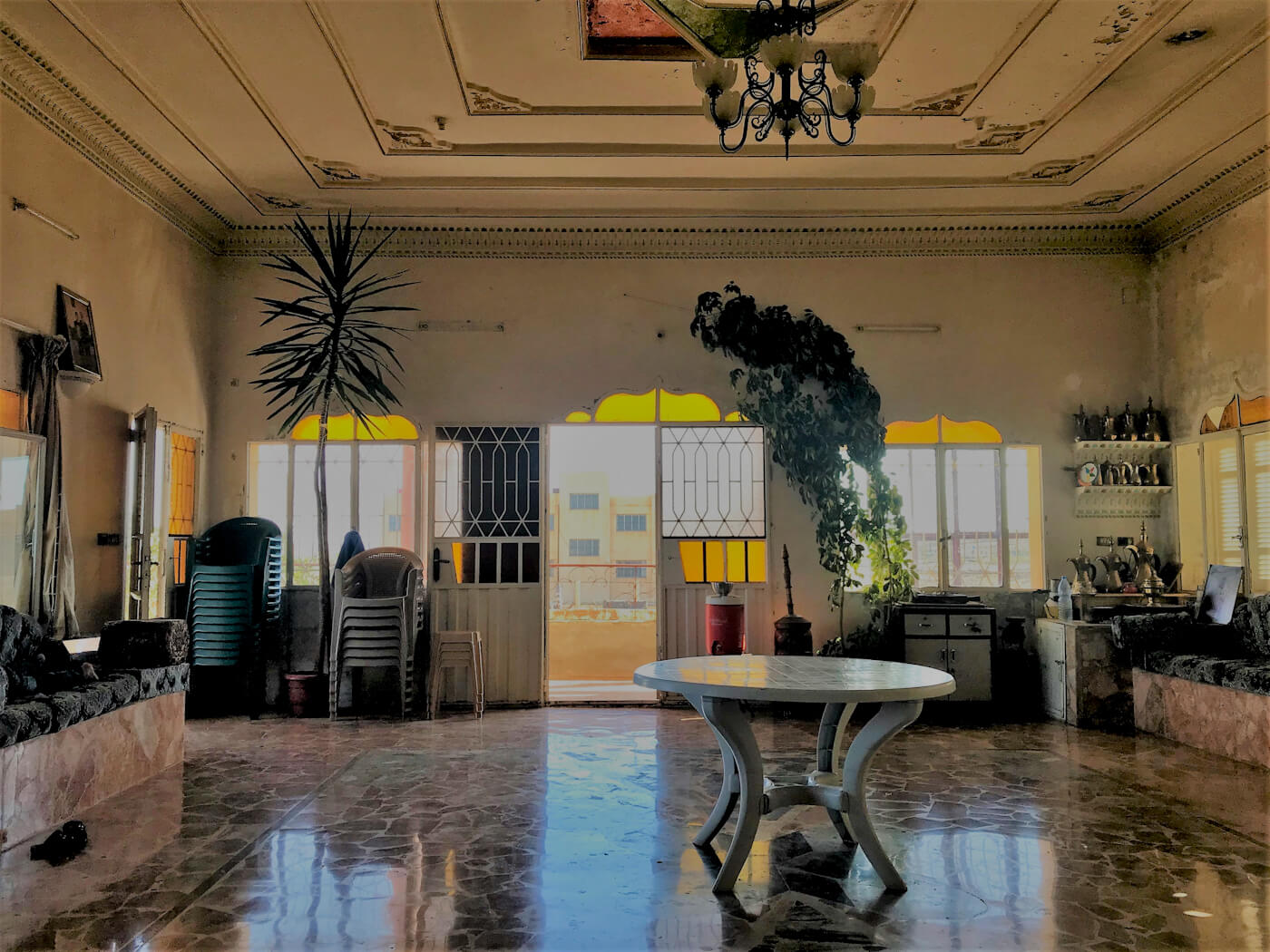
The Madafa, or meeting room, in Shbeki. Photo | Vanessa Beeley
All homes in Sweida have the traditional meeting room, the Madafa, which is always the most resplendent and light-filled room in any home. With the sun pouring through the glass onto the polished marble floors, I listened to Hazem as he recounted the events of that day. He told us that his family and other civilians were rounded up and taken to what is known as the “Bedouin House” at the outskirts of the village. The house faces in the direction of the eastern desert plains that divide Shbeki from the U.S.’ Al Tanf military base.
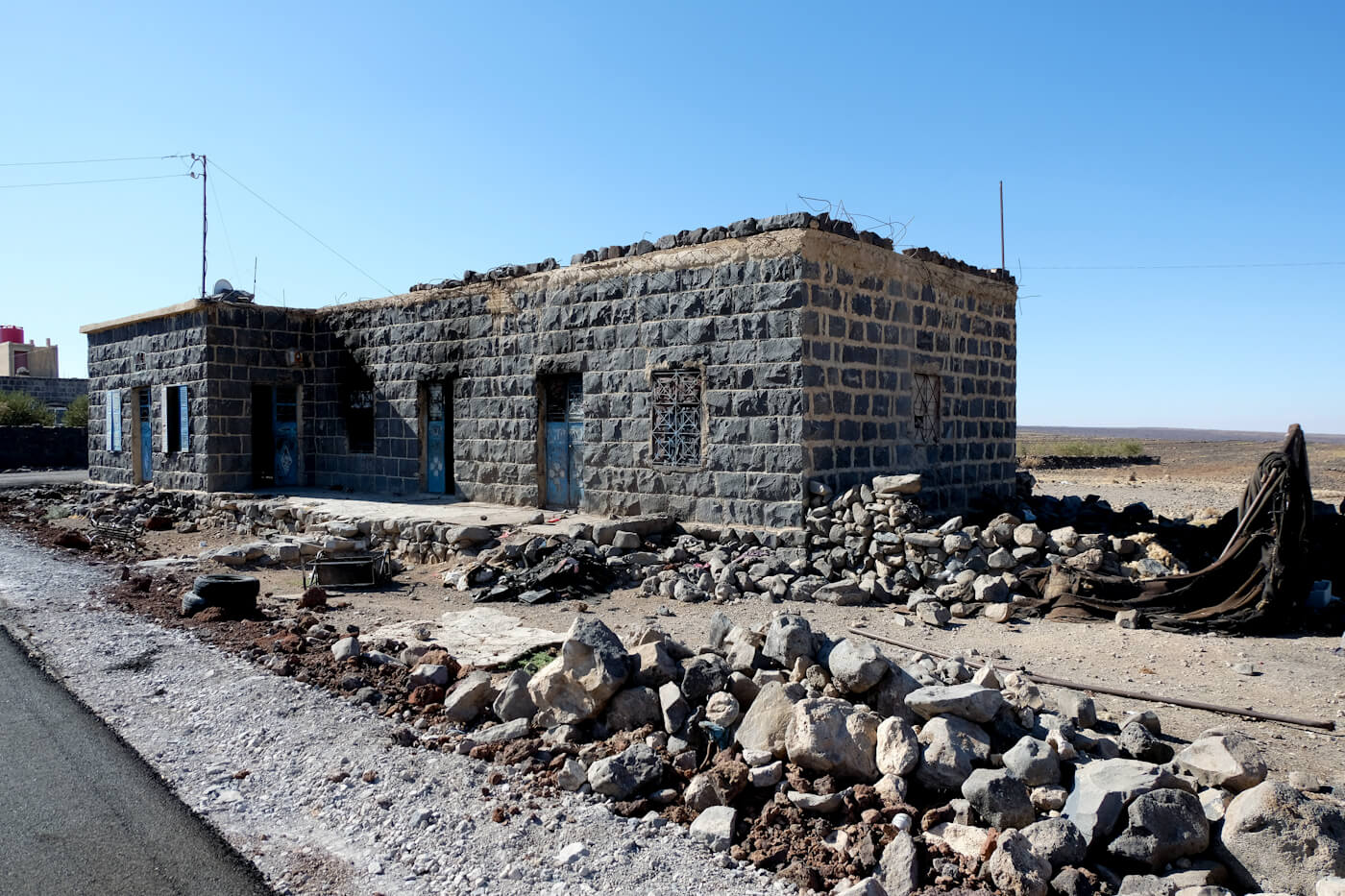
The “Bedouin” house where the men of the village captured by ISIS were executed. Photo | Vanessa Beeley
The ISIS terrorists took all the men outside and executed them in cold blood. Among them were Hazem’s father, brothers, cousin and neighbor. The women and children were then forced outside to see the bodies of their fathers, sons and husbands before they were taken hostage and force-marched towards Tilal Al-Safa. A few of those who had been kidnapped managed to evade their ISIS captors and returned to Shbeki, where they slept in an abandoned house just outside the village until dawn, when they were able to ascertain that the village was still under control of their friends and family. Among those who escaped were Hazem’s mother and sister-in-law. In total, 29 hostages were eventually abducted by ISIS mercenaries.
During the forced-march towards Tila Al-Safa, Hazem’s uncle’s wife, Ghosun Hasan Abo Ammar, had collapsed and had been unable to walk any further. The first group of ISIS fighters left her by the side of the road and refused permission for anyone to stay with her. Later, I was told that another team of ISIS terrorists had followed on behind and had executed her on the road. Her body was eventually retrieved, the next day, 6 km from the village.
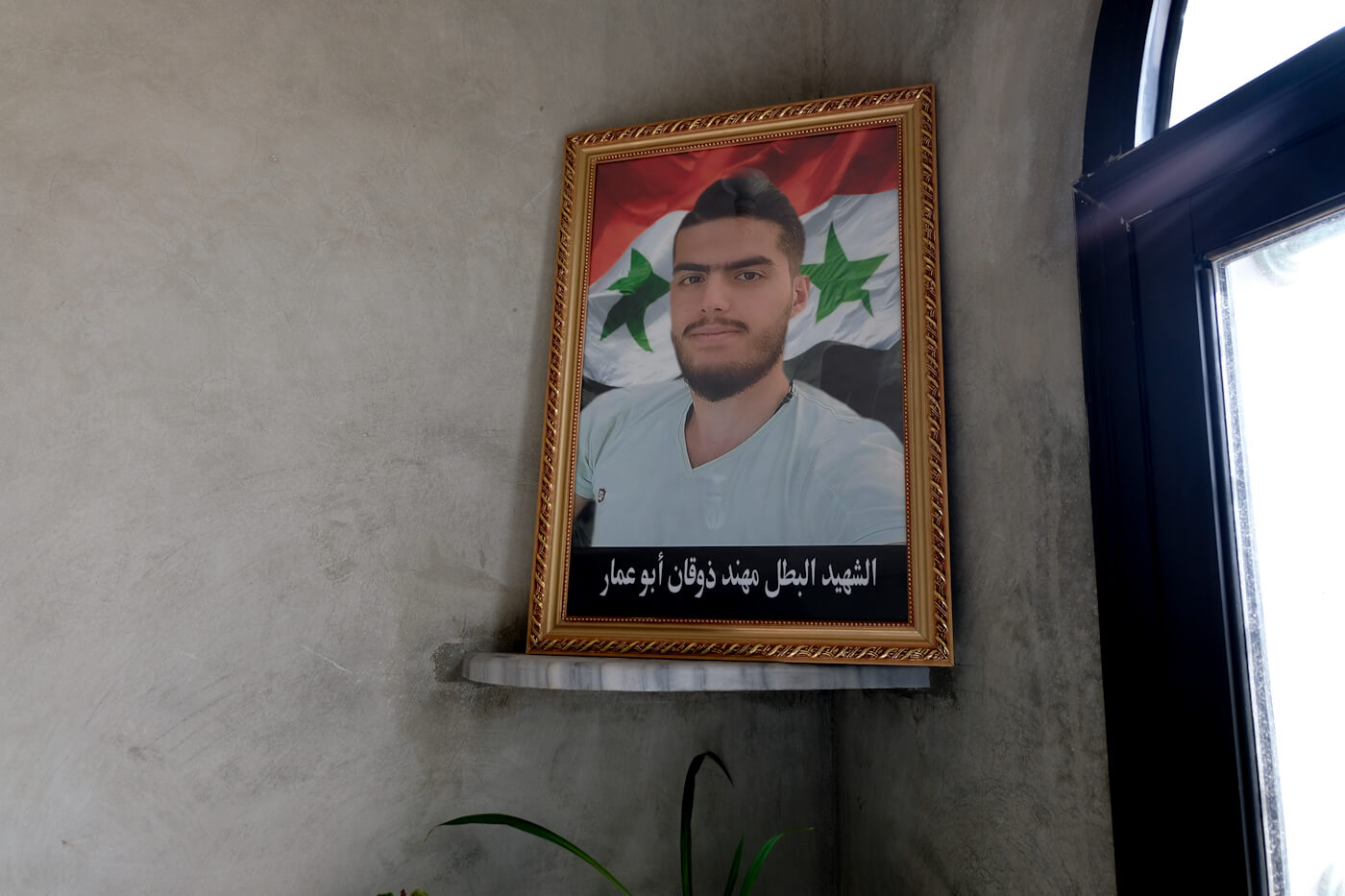
A photo of Mohannad Thokan Abo Ammar, beheaded by ISIS just eight days after the attack of 25th July, 2018. Photo | Vanessa Beeley
Eight days after the attack, ISIS executed one of the few young men in the group of hostages. Twenty-year-old university student Mohannad Thokan Abo Ammar was brutally beheaded by ISIS according to his family in Shbeki.
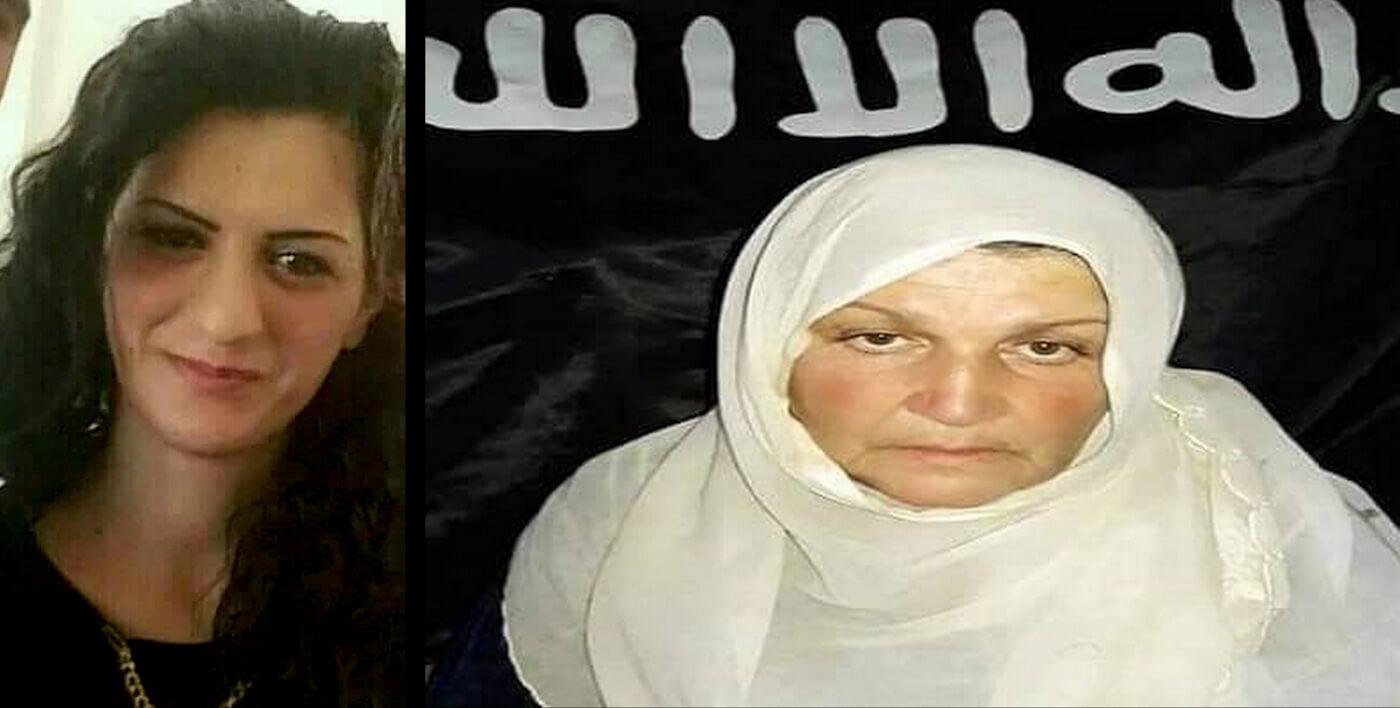
Left, Tharwat Fazel Abo Ammar, executed by ISIS on October 2, 2018. Right, Zahia Fawaz Al-Gebay, who died from health problems exacerbated by conditions hostages were forced to live in by their ISIS captors, on August 9, 2018. Photos | Courtesy of a Shbeki resident
On October 2, shortly after I left Syria, ISIS executed Tharwat Fazel Abo Ammar. They shot her in the head and filmed the gruesome ending of a young mother’s life to taunt the Sweida civilians and to warn them of further executions if any attempt was made by the SAA to pursue ISIS. Threats were issued by ISIS to conduct further executions if the SAA did not throttle back its military campaign to eradicate ISIS in the Yarmouk Basin, vindicating a theory by H. Saab that this was one of ISIS’ motives behind the attack.
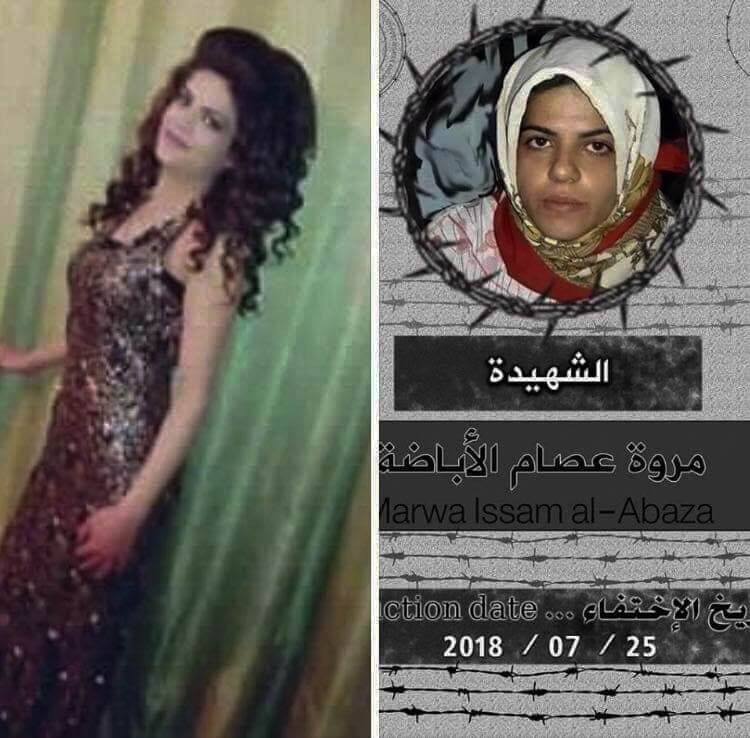
Marwa Essam Al-Abazah, the third female hostage to be executed by ISIS, just five months after her marriage to Majdee Abo Ammar. Photo | Courtesy of a Shbeki resident
Marwa Essam Al-Abazah was the wife of Majdee Abo Ammar, they had married just five months prior. Al-Abazah was the second female hostage to be executed by ISIS.
Before we left Shbeki in September, Hazem asked if it were possible to record a video message about the remaining kidnap victims, almost entirely women and children:
The SAA operation to liberate Sweida
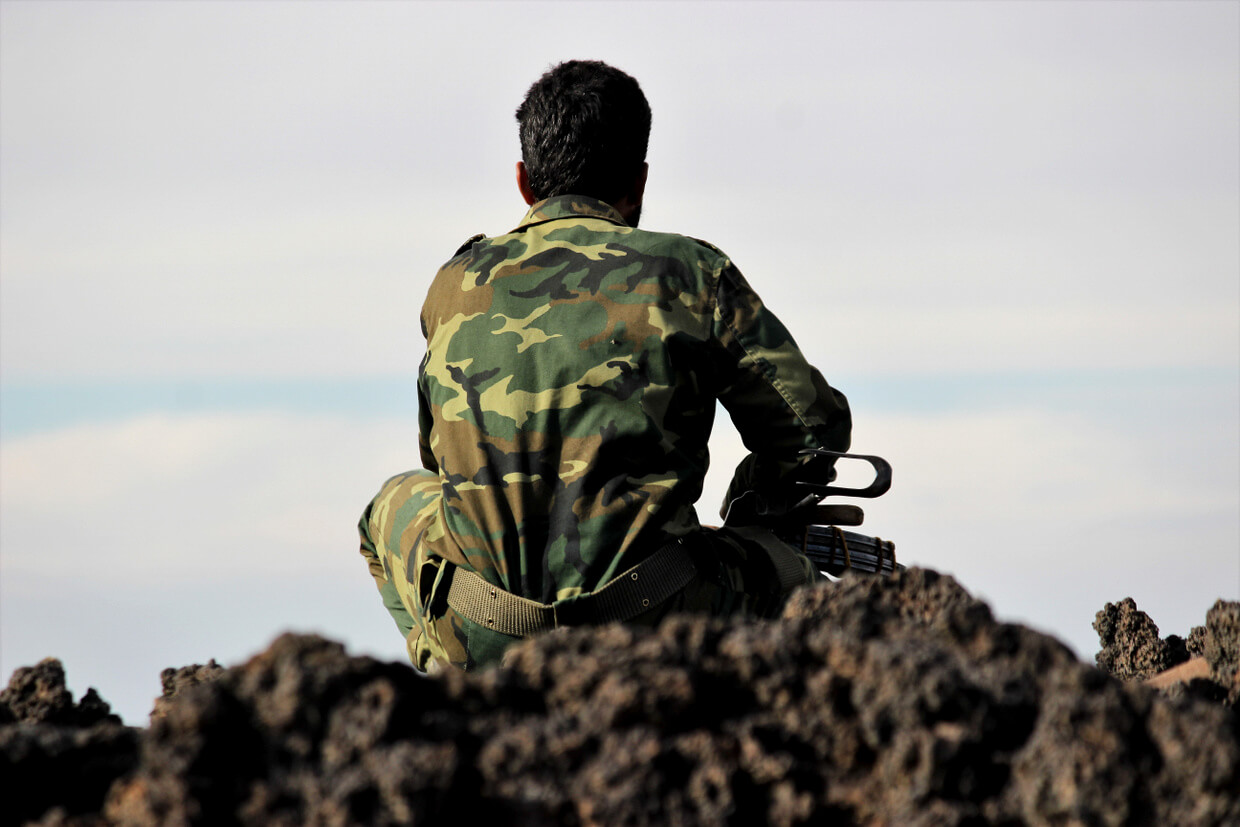
An SAA soldier surveys the unforgiving landscape of Tilal Al-Safa, northeast of Sweida. Photo | Vanessa Beeley
Elijah J. Magnier, Middle East analyst and journalist, described how ISIS terrorists benefited from the U.S. presence in the Al Tanf military base:
ISIS benefited from the U.S. safety [perimeter] around its military base at al-Tanaf, preventing Syrian and Iraqi armies from breaking into this [perimeter] to pursue ISIS when needed. ISIS took advantage of the U.S. measures and used the area to cross for the north where there is the bulk of its forces.”
Almost immediately after ISIS carried out the attacks in Sweida City and the eastern villages, the Syrian Arab Army (SAA) ramped up its operations to finally defeat ISIS in the region and to liberate the Sweida kidnap victims, who had been taken deep into ISIS-controlled territory in the volcanic and treacherous terrain of Tilal Al-Safa.
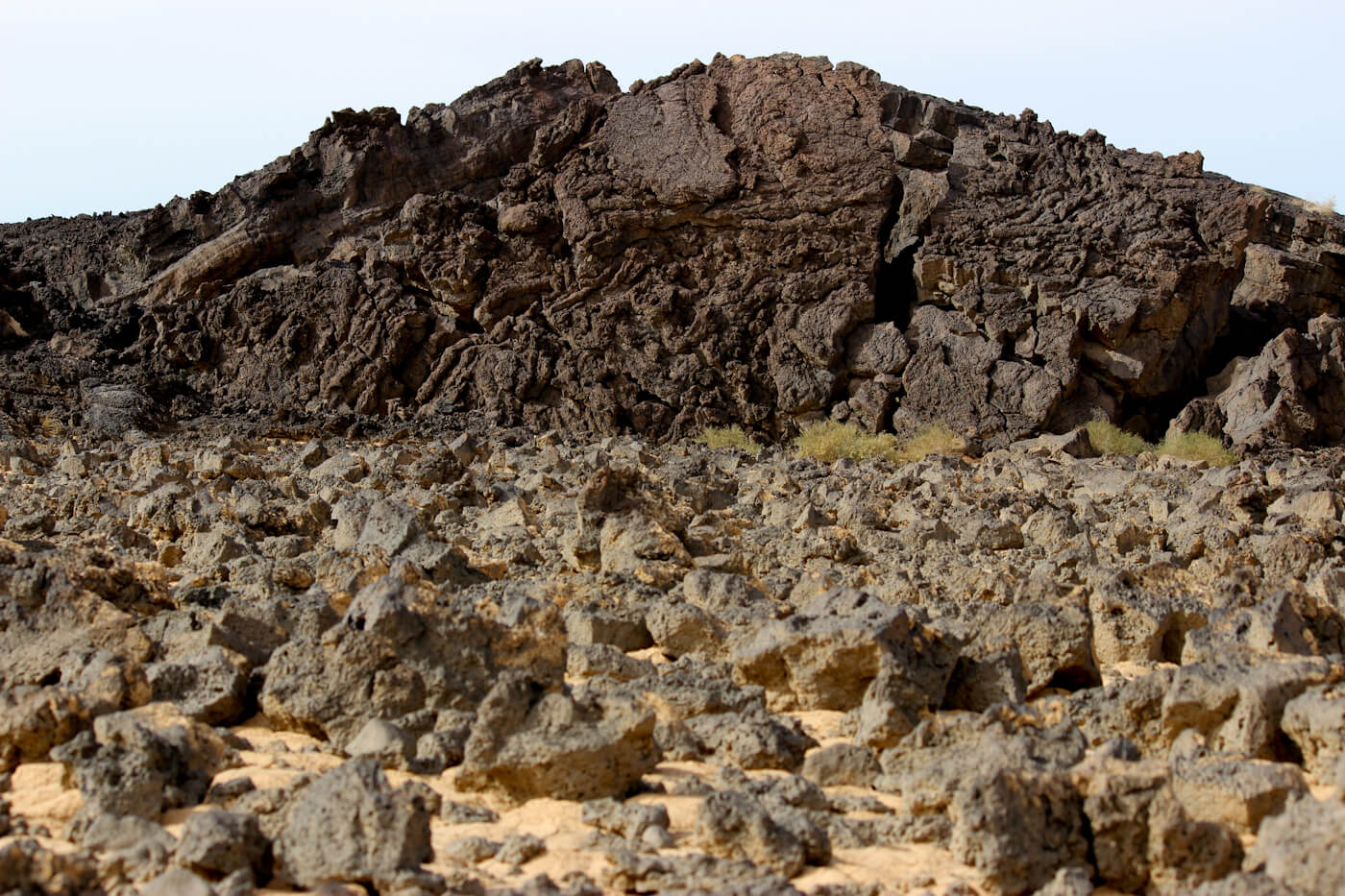
The treacherous terrain of the Badiya (desert) at Tilal Al Safa – an ISIS stronghold to the east of Sweida. Photo | Vanessa Beeley
On October 14, 2018, Syrian Arab News Agency (SANA) reported that units of the SAA, in cooperation with allied forces, were continuing to “tighten the noose” around ISIS terrorists in the depths of the rocky escarpments and cliffs of Tilal Al-Safa, the “last stronghold for ISIS in the Sweida eastern Badiya [desert].” The SAA was inexorably advancing, uncovering stockpiles of U.S.- and EU-supplied weapons and ammunition left behind by the retreating terrorists.
On November 27, 2018, a video was released by a Russian Media outlet, Rusvesna, showing SAA soldiers uncovering arms caches in Tilal Al-Safa. SouthFront, an independent media outlet following the Syrian conflict very closely picked up on these videos and reported on them:
The weapons caches contained a U.S.-made TOW anti-tank guided missile (ATGM), three Bulgarian-made Fagot ATGMs, two Soviet-made RPG-22 anti-tank rockets and a Yugoslav-made M79 Osa anti-tank weapon along with five rounds.”
Earlier in November, images taken from the mobile phone of a captured ISIS fighter had shown that the “terrorist group was using U.S.-made assault rifles and a Chinese-made man-portable air-defense (MANPAD) system, FN-6, which had been reportedly supplied with help from the U.S. and Qatar to several Free Syrian Army (FSA) groups in Syria.” The supply pipeline was the failed U.S. “train and equip” program authorized by former U.S. President Barack Obama in 2014 and halted by President Donald Trump in 2017.
The captured ISIS fighters admitted that they had been receiving assistance and weapons directly from the U.S. base in Al Tanf. According to a South Front report, captured ISIS member Abu Abdullah Mayadin told Syrian reporters on November 9:
We received supplies from the U.S. base in al-Tanf through Abu Audi, his brother Saeed and Abu Ali al-Buri [al-Badui]; he is a member of ISIS, he provided us with vehicles and 23mm machineguns.”
On October 20, following negotiations between the Syrian government and ISIS terrorists, six of the hostages were released. Among them were four children — Ya’arub Jba’ai, Mulham Jiba’ai, Ghaida Jba’ai and Amwaj Jba’ai — and two women — Abeer Shaglin and Rasmyia Abu Ammar — according to the SANA report.
While certain corporate media outlets and “opposition” figures like Lebanese Druze leader Walid Jumblatt appeared to exploit the post-ISIS-attack confusion to attempt to drive a wedge between the Druze community and the Syrian government, all civilians I spoke to expressed gratitude for the way in which Syrian President Bashar Al Assad involved himself in the negotiations for the release of the hostages and for the government’s near-daily contact with community leaders to follow up on the progress of the talks.
Their admiration and respect extends to the SAA, which fought a long and arduous campaign to cleanse ISIS from the southern region.
The news everyone had been waiting for
Watch what one of the young girls from #Sweida who were kidnapped by #ISIS said after she and the others were freed by the Syrian army. The expression on her father's face when she said she feared she would never see him again


